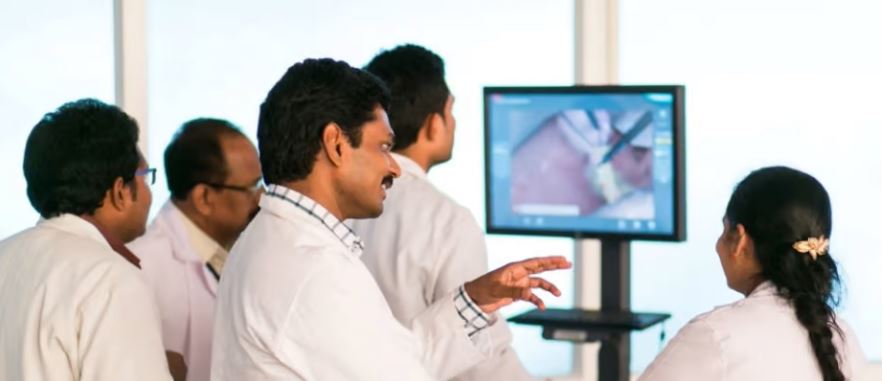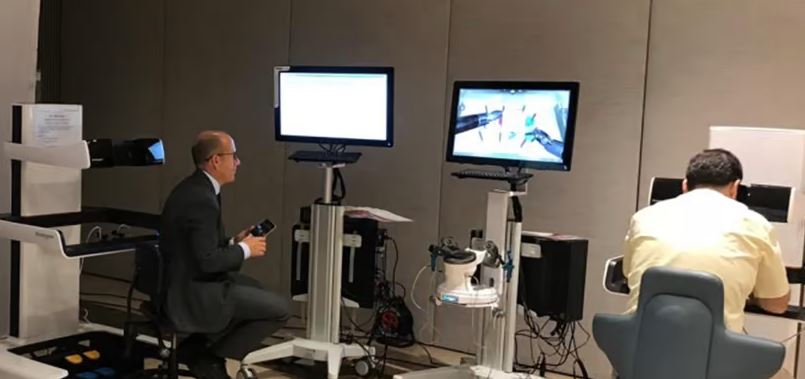Customer Company Size
Large Corporate
Region
- Europe
Country
- United Kingdom
Product
- Cognito NDR platform
Tech Stack
- AI-derived machine learning
Implementation Scale
- Enterprise-wide Deployment
Impact Metrics
- Productivity Improvements
- Digital Expertise
Technology Category
- Analytics & Modeling - Machine Learning
Applicable Industries
- Education
Use Cases
- Cybersecurity
Services
- Cybersecurity Services
About The Customer
Royal Holloway, University of London, is one of the top 25 universities in the UK. It is located just 19 miles from central London and is situated on 135 acres of parkland. The university has over 11,000 students and 2,000 staff members. It is a center of research and excellence in cybersecurity, making it a particularly attractive target for threat actors. The large population of students and staff regularly connects to multiple devices, presenting a broad attack surface.
The Challenge
Royal Holloway University of London, a top 25 university in the UK, was facing a significant challenge in defending against a wide range of cyber threats. As a center of research and excellence in cybersecurity, the university was a particularly attractive target for threat actors. The large population of students and staff regularly connected to multiple devices, presenting a broad attack surface. With limited resources, the Cyber Security team at Royal Holloway was under huge pressure to keep up with the increasing workload of manual investigations in response to suspected vulnerabilities. They needed a solution that could detect threats that managed to penetrate their network, or those that originated from inside their perimeter defenses, without needing to perform manual intervention.
The Solution
After evaluating multiple solutions, Royal Holloway selected the Cognito network detection and response (NDR) platform from Vectra. The Cognito® NDR platform automates the hunt for cyberattackers, shows where they’re hiding and tells you what they’re doing. The highest-risk threats are instantly correlated to compromised host devices and prioritized by severity. This way, security teams can respond quickly to stop the spread of attacks and avert data breaches. Using the Cognito platform, the Cyber Security team at Royal Holloway can focus on high fidelity alerts and relevant information instead of being overwhelmed by alerts. Now, any critical threats can be automatically shut down. Cognito Detect identifies and stops cyber attackers across cloud, data center, IoT, and enterprise environments. It uses AI-derived machine learning models to deliver real-time attack visibility and place attack details at your fingertips.
Operational Impact

Case Study missing?
Start adding your own!
Register with your work email and create a new case study profile for your business.
Related Case Studies.

Case Study
Revolutionizing Medical Training in India: GSL Smart Lab and the LAP Mentor
The GSL SMART Lab, a collective effort of the GSL College of Medicine and the GSL College of Nursing and Health Science, was facing a challenge in providing superior training to healthcare professionals. As clinical medicine was becoming more focused on patient safety and quality of care, the need for medical simulation to bridge the educational gap between the classroom and the clinical environment was becoming increasingly apparent. Dr. Sandeep Ganni, the director of the GSL SMART Lab, envisioned a world-class surgical and medical training center where physicians and healthcare professionals could learn skills through simulation training. He was looking for different simulators for different specialties to provide both basic and advanced simulation training. For laparoscopic surgery, he was interested in a high fidelity simulator that could provide basic surgical and suturing skills training for international accreditation as well as specific hands-on training in complex laparoscopic procedures for practicing physicians in India.

Case Study
IoT platform Enables Safety Solutions for U.S. School Districts
Designed to alert drivers when schoolchildren are present, especially in low-visibility conditions, school-zone flasher signals are typically updated manually at each school. The switching is based on the school calendar and manually changed when an unexpected early dismissal occurs, as in the case of a weather-event altering the normal schedule. The process to reprogram the flashers requires a significant effort by school district personnel to implement due to the large number of warning flashers installed across an entire school district.

Case Study
Implementing Robotic Surgery Training Simulator for Enhanced Surgical Proficiency
Fundacio Puigvert, a leading European medical center specializing in Urology, Nephrology, and Andrology, faced a significant challenge in training its surgical residents. The institution recognized the need for a more standardized and comprehensive training curriculum, particularly in the area of robotic surgery. The challenge was underscored by two independent studies showing that less than 5% of residents in Italian and German residency programs could perform major or complex procedures by the end of their residency. The institution sought to establish a virtual reality simulation lab that would include endourological, laparoscopic, and robotic platforms. However, they needed a simulator that could replicate both the hardware and software of the robotic Da Vinci console used in the operating room, without being connected to the actual physical console. They also required a system that could provide both basic and advanced simulation training, and a metrics system to assess the proficiency of the trainees before they performed surgical procedures in the operating theater.

Case Study
Edinburgh Napier University streamlines long-distance learning with Cisco WebEX
• Geographically dispersed campus made in-person meetings costly and inconvenient.• Distance-learning programs in Malaysia, India, and China required dependable, user-friendly online tools to maximize interaction in collaborative workspaces.• Virtual learning environment required a separate sign-in process, resulting in a significant administrative burden for IT staff and limited adoption of collaboration technology.

Case Study
8x increased productivity with VKS
Before VKS, a teacher would spend a lot of time showing a group of 22 students how to build a set of stairs within a semester of 120 hours. Along with not leaving the teacher much time to provide one-on-one support for each student to properly learn carpentry, it also left a considerable amount of room for error. Key information would be misinterpreted or lost as the class was taught in the typical show-and-tell way.

Case Study
Scalable IoT Empowering GreenFlex's Sustainable Growth
GreenFlex, a company that supports sustainable development, decarbonization, and energy efficiency, faced several challenges in its quest to expand its business. The company needed to deploy a robust and sustainable IoT technology to support its growth. It was crucial for them to monitor and control devices at customer sites in a safe and reliable manner. They also needed to integrate devices across a range of communication protocols and gather and act on data to meet efficiency targets. GreenFlex had previously built IoT capabilities into its digital platform, GreenFlexIQ, to monitor and manage customer sites remotely. However, they soon realized that they needed a new platform to support their ambitions. They needed a platform that could scale to connect more devices for production management and make it easier for the operations team to manage devices in the field.







